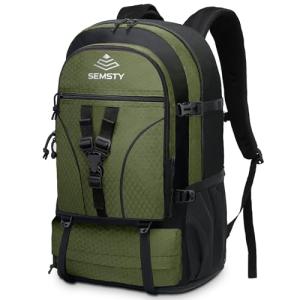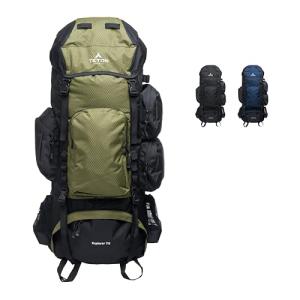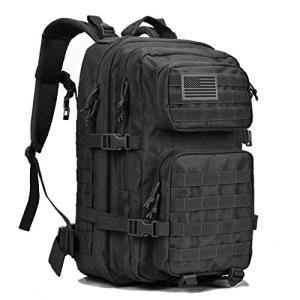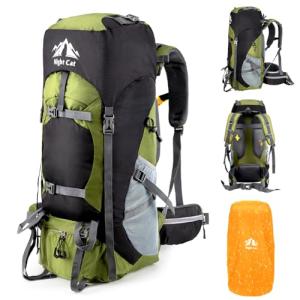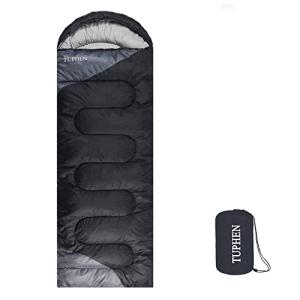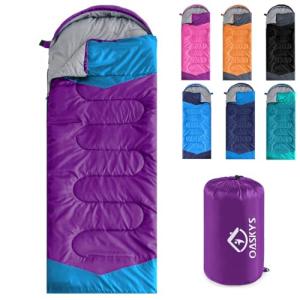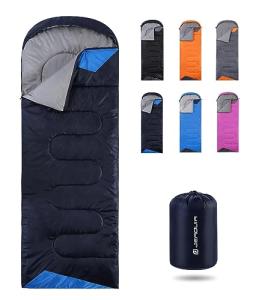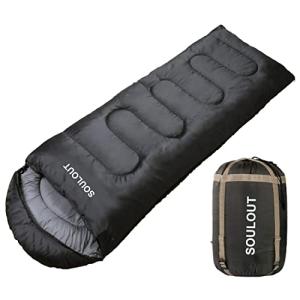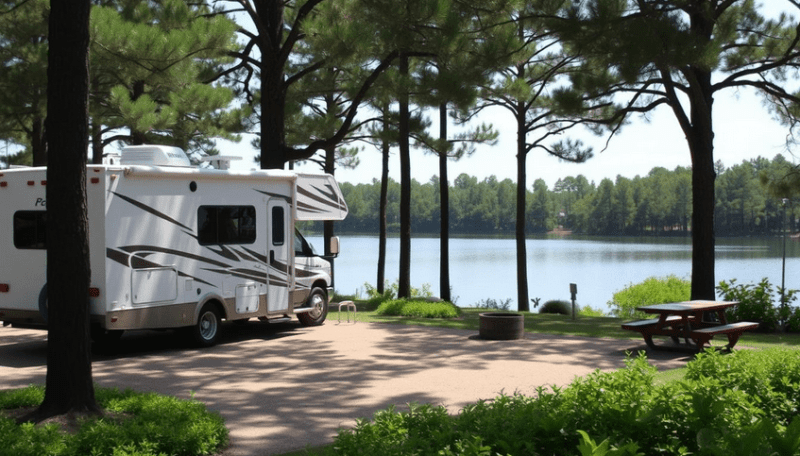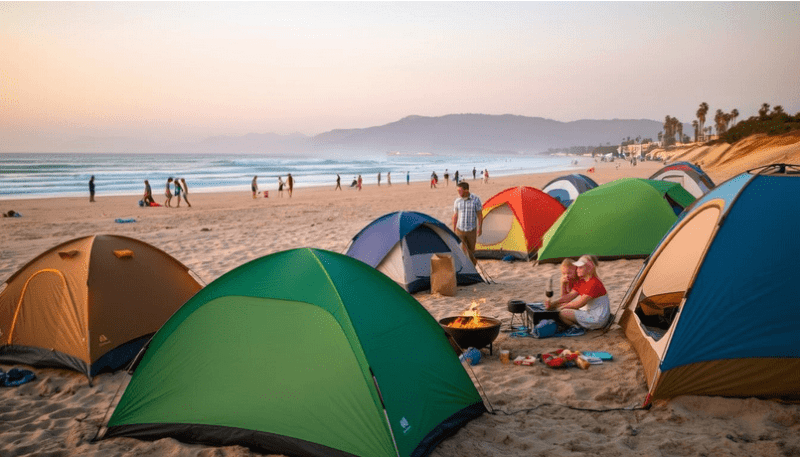Choosing the right backpack for camping is crucial for a comfortable and enjoyable outdoor experience. The perfect backpack should balance size, comfort, and functionality to meet specific needs while hiking or camping. When selecting a backpack, one must consider factors such as the length of the trip, type of terrain, and personal preferences.

A well-fitted backpack can enhance the hiking experience, allowing for easier movement and reducing fatigue. It's important to look for features like adjustable straps, ample storage, and durability to withstand various outdoor conditions. Whether it's a lightweight daypack for a short hike or a larger pack for backcountry travel, the right choice can make all the difference in an adventure.
When planning camping trips, having the right gear is just part of the equation. Understanding the features and purposes of different packs can guide choices and ensure that outdoor excursions are both enjoyable and successful.
Key Takeaways
- A well-chosen backpack enhances comfort and efficiency.
- Functionality and fit are key to a successful camping experience.
- Selecting durable gear prepares one for diverse outdoor activities.
Understanding Backpack Essentials

Choosing the right backpack for camping involves careful consideration of capacity, fit, and the type of frame. Each factor impacts comfort and usability, ensuring the backpack serves its purpose effectively.
Analyzing Backpack Capacity and Volume
Backpack capacity is often measured in liters. This indicates how much gear it can hold. Common volume options include:
- Day Packs (20-30 liters): Suitable for short hikes, carrying essentials like water and snacks.
- Weekend Packs (30-50 liters): Great for overnight trips, allowing space for a sleeping bag and food.
- Extended Packs (50+ liters): Ideal for multi-day adventures, accommodating larger items like tents and cooking gear.
Backpack capacity directly affects weight distribution. A well-sized pack makes carrying gear easier and more balanced.
Importance of Proper Fit: Torso and Waist Size
A proper fit is crucial for comfort during hikes. A backpack must align with the user’s torso length, not just height. To measure torso length, a person should:
- Stand straight.
- Locate the C7 vertebra (the prominent bone at the base of the neck).
- Measure to the hip bones.
Waist size is equally important. Most backpacks feature adjustable waist belts. A snug fit here helps transfer load from the shoulders to the hips, enhancing comfort.
Expandable 40+5L Hiking Backpack for Men & Women
Perfect for carrying all your gear on those adventurous hikes and weekend getaways
Product information
$31.99 $27.19
Product Review Score
4.24 out of 5 stars
219 reviewsProduct links
Types of Backpacks: Deciding Between Frame Options
There are several types of backpacks, each with unique features:
-
Internal Frame Backpack: Offers a snug fit against the body, improving balance. These packs are ideal for hikers needing agility on the trail.
-
External Frame Backpack: Provides ample support for larger loads but can feel bulkier. This type is preferred for hauling heavy gear over rough terrain.
-
Frameless Backpacks: Lightweight options suited for minimalist hikers. While these packs are simple, they offer less support compared to framed versions.
Choosing the right type hinges on trip length and the gear carried. Each frame style offers distinct advantages based on the user's needs.
TETON 75L Explorer Backpack with Rain Cover
Gear up for your next adventure with this spacious and durable backpack designed to keep your belongings safe and dry
Product information
$109.99 $88.81
Product Review Score
4.85 out of 5 stars
116 reviewsProduct links
Features for Functionality and Comfort

When selecting a camping backpack, comfort and functionality are key. It is essential to focus on how features like straps, suspension systems, and pockets enhance the user experience on the trail.
Harnessing Comfort: Straps and Padding
Shoulder straps play a vital role in ensuring comfort during outdoor activities. They should be padded to relieve pressure on the shoulders, especially during long hikes. Adjustable straps allow users to customize the fit, ensuring the pack sits correctly on the body.
A sternum strap can provide extra support by stabilizing the load. This strap helps distribute the weight evenly across the chest, reducing strain during movement. Additionally, a well-designed hip belt is crucial. Padded hip belts take pressure off the shoulders and allow for better weight distribution across the hips.
Advanced Suspension and Ventilation Systems
Good backpacks come with advanced suspension systems that improve load distribution. Adjustable suspension helps fit the pack to different body types. This feature enhances comfort, making it easier to carry heavy loads over long distances.
Ventilation is another critical factor. Many backpacks include breathable mesh back panels that promote airflow, keeping the back cool. This reduces moisture buildup, which can lead to discomfort. Load lifters, located near the top of the pack, help pull the weight closer to the body, improving balance and stability on the trail.
Convenience on the Trail: Pockets and Attachment Points
Having the right pockets and attachment points can greatly enhance the user experience. Pockets should be strategically placed for easy access to essentials like snacks and maps. Large side pockets can hold water bottles or items that need quick access.
Attachment points are also beneficial. They allow for easy gear access, such as trekking poles or sleeping bags. Compression straps can secure loads and stabilize items within the pack, ensuring nothing shifts while in motion. Moreover, many packs come with a hydration system, which provides easy access to water while hiking. This feature helps maintain hydration without having to stop and open the pack.
Specialized Packs for Diverse Outdoor Activities

Choosing the right backpack is essential for different outdoor activities. Each type of pack is designed to meet specific needs based on the duration and nature of the adventure.
Day Hikes Versus Multi-Day Adventures
Day hikes require a daypack that is lightweight and has enough space for essentials like water, snacks, and a first aid kit. Typically, daypacks range from 15 to 30 liters in volume. They often feature compartments for organization and hydration reservoirs for easy access.
In contrast, multi-day backpacks are larger, usually between 40 and 70 liters, to accommodate extra gear needed for overnight stays. These backpacks typically include a removable daypack for shorter excursions from a campsite. They also offer features like larger hip belts to help distribute weight, pockets for easy access, and straps for securing additional items.
Mountaineering, Ultralight, and Expedition Packs
Mountaineering packs are designed for technical climbs, often featuring reinforced areas for gear like axes and ropes. They are usually streamlined to avoid snags during ascents. A good mountaineering pack should be durable and water-resistant.
For those interested in ultralight backpacking, packs often weigh less than 2 pounds. These are best for experienced hikers who want to minimize weight while maintaining functionality. They have fewer features but maximize comfort and efficiency.
Expedition backpacks are perfect for long-term adventures, often capable of holding 70 liters or more. They prioritize space and comfort, featuring adjustable frames to fit different body types, including women-specific backpacks designed to fit female anatomy better.
Selecting Durable and Reliable Gear

When choosing a backpack for camping, durability is a key factor. A durable pack can withstand rough trails and various weather conditions. Materials like nylon and polyester are recommended for their strength and resistance to wear.
Pack weight also matters. Lightweight backpacks are easier to carry during long hikes. Striking a balance between durability and weight can enhance comfort while trekking.
Value for Money is essential. Investing in a reliable backpack often pays off in the long run. Cheaper options may wear out quickly, leading to additional expenses.
Some backpacks feature a sleeping bag compartment. This extra space can keep the bag secure and separate from other gear. A hydration reservoir is another useful feature. It allows easy access to water while on the trail, promoting hydration.
Comfortable carry involves checking the fit and padding of the shoulder straps. A well-fitted backpack distributes weight evenly, reducing fatigue. Proper fit is crucial for an enjoyable hiking experience.
Navigation features, like external pockets for maps and compasses, are useful. They help keep essential items within easy reach. Sun protection is also important; consider a pack with a built-in sunshade or a cover.
Lastly, having a plan for emergency shelter is wise. Some backpacks allow for easy attachment of a small tarp or emergency blanket. This feature may be vital for unexpected situations in the wilderness.
Large Tactical Backpack for Camping & Hiking 40L
Perfectly designed to carry all your gear for any adventure, whether you're trekking through forests or camping under the stars
Product information
$42.93 $31.99
Product Review Score
4.96 out of 5 stars
86 reviewsProduct links
Frequently Asked Questions

When selecting the right backpack for camping, several specific questions often arise. Addressing these questions can help campers make informed decisions about size, fit, and features.
How do I determine the correct backpack size for my body dimensions?
Choosing the right backpack size starts with measuring the torso length. This is done by finding the distance from the C7 vertebra (the bony part at the base of the neck) to the top of the iliac crest (the top of the hip bones). Each backpack usually includes a sizing chart that matches torso length to backpack size.
What factors should I consider when choosing a backpack for extended travel?
When selecting a backpack for extended travel, the focus should be on capacity, weight, and comfort. A larger capacity is necessary for additional gear. It's vital to pick a lightweight pack with good padding and support to prevent discomfort during long trips.
What are the key differences between internal and external frame backpacks?
Internal frame backpacks are designed to keep the weight close to the body, providing better balance and stability. They are often preferred for rugged terrain. External frame backpacks, on the other hand, offer more ventilation and larger carry capacity, making them suitable for less demanding hikes.
Can you explain how to choose a backpack that balances weight distribution and capacity?
To achieve a balance between weight distribution and capacity, it's important to find a backpack with a good suspension system. It should incorporate adjustable straps and hip belts to help transfer weight to the hips, allowing for better control and comfort when carrying heavier loads.
What is the optimal backpack volume for weekend vs. long-duration camping trips?
For weekend trips, a backpack volume of 40 to 60 liters is typical, as it can hold necessary gear without being overly bulky. For longer camping trips, a volume of 60 to 80 liters is often recommended, allowing for more supplies and comfort during extended stays outdoors.
How important is the adjustment and fit of a backpack for multi-day hikes?
The adjustment and fit of a backpack are crucial for multi-day hikes. A well-fitted backpack can significantly reduce fatigue and discomfort. Features such as adjustable shoulder straps, torso length adjustments, and hip belts are essential to ensure a proper fit for long treks.
Night Cat Outdoor Backpacks - 40L, 70L, 90L
Perfect companions for your outdoor adventures, available in three spacious sizes
Product information
$58.99
Product Review Score
4.61 out of 5 stars
176 reviewsProduct links

